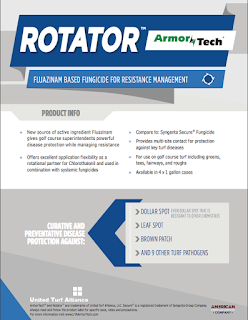During summer, stressors like heat, humidity, traffic, aeration, and disease pressure are tough on turf. This
easy spray program will keep your turf healthy and resilient. Before major summer
holidays, apply Intrinsic® brand fungicide to fortify your cool-season fairways, greens, and tees from heavy
disease pressure.
Intrinsic brand fungicides also boost your turf’s ability to deal with stress. So if you’re concerned about
summer stressors, follow this program. Your turf will be
championship-ready all summer.
Holiday
Spray program for cool-season greens:
BASF suggests that you treat your greens with Lexicon® Intrinsic brand fungicide before major summer
holidays. This will provide your turf with an optimal plant health foundation. Lexicon Intrinsic brand
fungicide provides resilient, healthy greens by controlling 27 turfgrass diseases.
Holiday
Spray program for cool-season fairways, tees, and surrounds:
Before major summer holidays, apply Honor® Intrinsic brand fungicide or Insignia® Intrinsic brand
fungicide to fairways, tees, and surrounds. Honor Intrinsic brand fungicide supplies excellent
preventive control of dollar spot and summer patch. It also provides 28 days of turf-boosting
plant health. Insignia SC Intrinsic brand fungicide is the industry
standard for plant health and disease control.





















